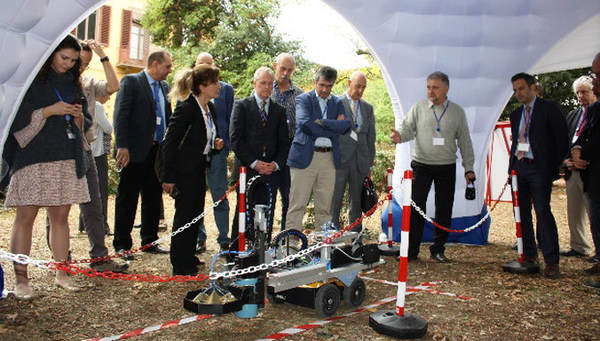NATO has revealed three technologies on detection and clearance of improvised explosive devices (IEDs), namely a semi-autonomous robot for detection of mines and IEDs, a lightweight and easy-to-use mine detector and a handheld detector for dirty bombs.
The alliance say that terrorist attacks in Europe and elsewhere have shown the vulnerability of critical infrastructure, such as metro stations and airports, to the use of hazardous objects like concealed weapons or explosives. Cooperation between scientists and experts is critical to develop best practices and technologies to counter these threats.
Without adequate regional and international cooperation, it would be impossible to address the variety of issues relating to threats from explosives today,” said Robert Weaver, NATO Deputy Assistant Secretary General for Emerging Security Challenges at a two-day workshop organised in cooperation with the University of Florence.
The first technology tested at the workshop was a semi-autonomous robot for detection of mines and IEDs, which was developed by a project co-led by Italy, the United States and Ukraine. It is named ‘U-GO First’ to prevent casualties in search of explosives and to use robots instead. It uses new impulse radar and 3D data for real-time detection.
The second project is a simple, lightweight, easy-to-use and cheap handheld ultra-wideband (UWB) mine detector, developed by a project co-led by Norway and Ukraine and produced through 3D printing.
The third – and last one – is a handheld detector for dirty bombs to be used mainly in port and border security and developed together with Australia, Croatia, Japan, Portugal and Slovenia. A dirty bomb is one type of radiological dispersal device that combines conventional explosives, such as dynamite, with radioactive material.













